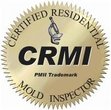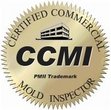Mold Inspection

Vista Properties of Virginia is your newest Mold Inspection Company in the Northern Area. We are Certified in Residential and Commercial Mold Inspections and soon to be Remediation.
Mold is probably the most feared fungus in your home today. Although mold can be deadly, it is often misconstrued. There are over 1,000 different types of mold, and it has been proven that
only about 100 are believed to cause health problems and/or be toxic.
The Unthinkable Can Happen To You!
What if…?.
What type of mold is toxic?
Although some molds may appear black they are not necessarily the feared ‘black mold’. Although all molds are a fungus; not all fungus’ are mold.
Prevention

The old saying ‘An ounce of prevention is worht a pound of cure’ couldn’t be more true. Simply staying in control of soecific areas of your home can save you a world of headaches, and perhaps
thousands of dollars in repairs. For more information on Moisture problems leading to mold click on the link below.
Where it lives
Mold thrives in dark, damp places, and loves to feast on the food your home provides. Mold can be found almost anywhere if you dont take care of your home. The key areas to watch are:
-
- Basements that are moist or have moisture leaks
- Windows that leak when it rains
- Bath tubs and showers that overflow or have leaky drains
- Behind walls that have deteriorated exterior finishes
- Carpets in areas of moisture entry points (entry doors, where a dishwasher/ washer/ or sink can overflow and leak unseen moisture.
- Under laminate floors over concrete floors that have moisture problems

These are just some of the key areas to watch, although each home is its own, there is still common areas of concern
How do I Kill Mold/ Mildew?
For more information on moisture problems that can lead to mold:
Chlorine Bleach Is the Best Way To Kill Mold – Right? Wrong!
So there is some black mold in your basement, laundry room, bathroom or around that pesky damp spot in your ceiling. No problem, just grab some of that mold killer you bought at the local grocery store,
spray the black stuff and in a few minutes it turns brown, then vanishes – voila! You have killed the mold and have nothing more to worry about – right?
No, you BLEACHED it you didn’t kill it. Chances are it is still there and growing like crazy. Don’t get me wrong, bleach kills mold just fine on hard surfaces like counter tops, shower tiles, etc.
But on porous surfaces like walls, ceilings, concrete and wood, the chlorine gets the TOPof the mold, but the roots (called, “hyphae”) just go happily on, reproducing at a furious rate.

The chlorine you use around the house is only 6% chemical, the rest is water, and guess what mold roots like best? Yup, the 94% water you just fed them!
I know it sounds totally counterintuitive to everything you have learned (or seen), but even the EPA (who rates the chemicals and processes that kill mold) won’t give chlorine bleach products their
seal of approval as a mold killer.
The mold remediation pros have known about this for a long time and they avoid the stuff (except sometimes as a biocide – bacteria killer).
And worse, chlorine eats everything it touches, skin, nasal membranes, it discolors many metals, fabrics and carpets. You already know what happens when you spill bleach on your favorite pair of slacks or
antique area rug, but some folks think they might be able to use it on furniture. Unfortunately, much of our modern wood furniture is made of a nice veneer over particle board. Particle board swells when
it is exposed to water – the same water that makes mold so happy.

A restoration professional told us about a home owner who decided to mix ammonia with bleach to really give black mold a run for its money. The mold didn’t seem to mind much, but the home owner ended up
being the one on the run. In World War II they mixed ammonia with chlorine to make a deadly, eye burning, throat searing gas that drove the enemy out of the trenches!
One In other articles we will tell you more about what you can do to prevent mold, treat mold and avoid turning wet mold into clouds of airborne particles (like what happened in a government building when workers
created a “sick building syndrome” from what started out as a simple case of black mold that got dried out and “fed” into the building’s air system!) But for now, just keep in mind that chlorine bleach
is okay for hard surfaces only, and only when it is used by itself (no chemical cocktails!)
As a rule of thumb the Best way to clean mold is soap and water.

Thermograph Technology
Along with oxygen and food mold needs moisture to thrive. The advancements in todays technology have allowed professionals to see through walls and behind objects to detect moisture. Thermographs allow you to
locate moisture without destruction. Along with a humidity meter and moisture meter you can solve almost any moisture entrance point fairly easily. We can use this technology to isolate entrance points and assist you in
finding an effective solution.
Treatment
The most common mis conception is to use bleach as a cleaning agent, Truth is the fumes may be more toxic to you than the actual fungus. The most effective cleaner for surface molds and
some moderate molds/ fungus’ is simply soap and water.
Fungicides and Biocides may only be useful in certain circumstances, when you have a question it is always advised to consult a professional.




